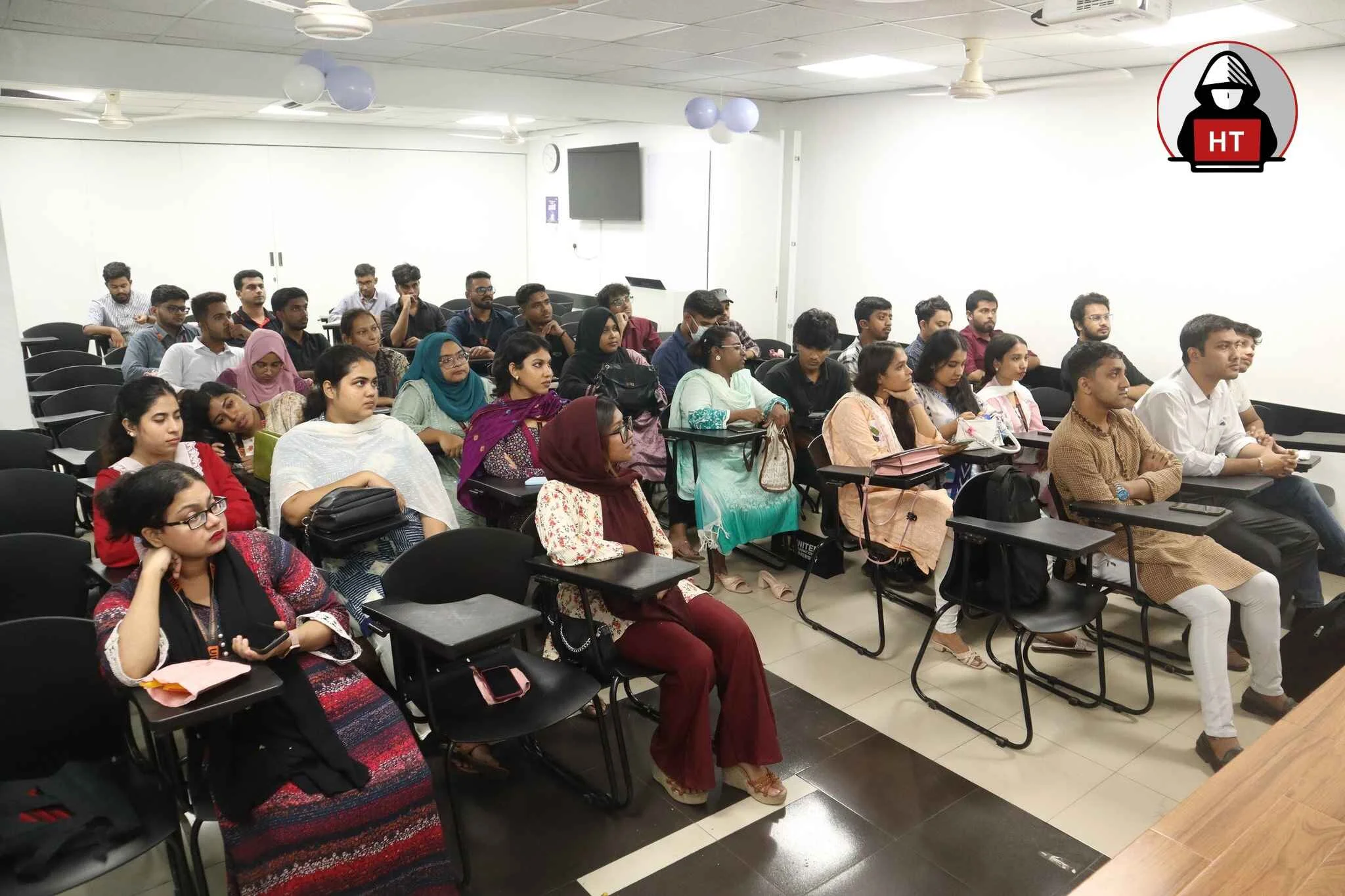In today's increasingly digital world, cybersecurity threats are growing more sophisticated and frequent, making robust monitoring, detection, and response systems essential for organizations. Security Information and Event Management (SIEM) systems are critical to effective cybersecurity, aggregating and analyzing data from various sources to detect suspicious activity and ensure quick incident response. Splunk SIEM, one of the most widely used SIEM solutions, provides powerful analytics, visualization, and automated response capabilities, making it a valuable tool for both IT security and operations. Splunk’s versatility allows organizations to detect threats, monitor activities, and respond to incidents in real time. Splunk Online Training courses are essential for IT professionals looking to develop skills in deploying, managing, and leveraging Splunk for cybersecurity monitoring, data analysis, and incident response. This blog dives into the fundamental components of Splunk Online Training, exploring what a typical course covers, the importance of hands-on labs, core functionalities, key skills, certifications, and career opportunities in the field.
 Top Ranked Cyber Secuirty Course By HACKING TEACHER
Top Ranked Cyber Secuirty Course By HACKING TEACHER


































AI Powered Full Stack Web Development Course
Learn AI powered web development and futureproof your career to lead in an AI dominated tech industry.
Splunk SIEM is part of the Splunk Enterprise Security (ES) suite, which combines data collection, correlation, and threat detection capabilities in a single platform. As a SIEM solution, Splunk ingests log and event data from various systems and devices, normalizes the data, and provides actionable insights into potential security incidents. By utilizing Splunk’s search and correlation functions, organizations can identify threats, investigate anomalies, and generate reports to meet compliance requirements.
Unlike traditional SIEM solutions, Splunk offers scalability and versatility, supporting both structured and unstructured data from a wide variety of sources. The tool's flexibility and real-time processing capabilities make it indispensable in modern security operations centers (SOCs). For cybersecurity professionals, Splunk Online Training offers the skills needed to configure, manage, and interpret data within the platform to enhance an organization’s security posture.
Advanced training focuses on implementing correlation rules, threat intelligence integration, and automated response capabilities. By the end of the course, students acquire a comprehensive understanding of how to utilize Splunk’s full range of features for detecting, investigating, and responding to security incidents.
Understanding how to properly ingest and normalize data is essential for successful security monitoring, as poorly structured data can lead to missed threats and false positives. Hands-on labs in data ingestion give students practical experience with setting up inputs, handling data formats, and using tools like Data Models to streamline data organization. Practical labs offer students the opportunity to practice SPL queries and correlation exercises, helping them become proficient in using Splunk to detect complex attack scenarios.
































Highest Salary
Average Salary
Hiring Partners


+ Unlimited Pwnbox usage
+ CPE credits submission
+ Unlimited Pwnbox usage
+ CPE credits submission
+ Unlimited Pwnbox usage
+ CPE credits submission
+ Unlimited Pwnbox usage
+ CPE credits submission
The Hacking Teacher Certification teaches educators about teaching ethical hacking and cybersecurity with the proper skills. This program offers extensive training on some of the most technology pressing issues facing the cyber security world today including penetration testing, threat analysis and secure coding. It is ideal for IT professionals and trainers to ensure that all knowledge is transferred for audiences to inspire the next generation of cybersecurity experts.

We focus on essential exploiting topics such as SQL Injection, Wireless Networks, IoT Hacking, Cloud Computing, social engineering, sniffing, and session hi jacking.










Enterprise Attack Simulation Training is an opportunity to practice simulating cyberattacks against corporate networks on a hands-on basis. Participants learn how to find vulnerabilities, to exploit weaknesses and to evaluate system defenses using advanced tools and methodologies.

The practice is in live, not simulated virtual IT labs built according to the leading vendors certifications, including: Apart from these CompTIA, Microsoft, Cisco, VMware etc." Our labs were designed to be interactive, and targeted towards a lot of real world experience so learners can hone their practical skills. We work with subject matter experts on networking, security, cloud computing and more, and we create and deliver labs based on these core IT competencies.











Hacking teacher Learning is here to ensure that you don’t get left behind in a world of technology that is too quickly changing. On a day to day basis, we’re recording and sharing content that can impact your bottom line.

Data visualization is crucial in Splunk SIEM, as it enables security teams to understand complex data patterns quickly and communicate insights effectively. Splunk’s dashboarding and reporting capabilities allow users to create custom visualizations, track metrics, and develop detailed security reports. In Splunk Online Training, students learn to build dashboards that display real-time data on key security indicators, such as login activity, threat trends, and incident status.
Courses also cover how to use panels, charts, and gauges to create meaningful visual representations of security data. Reporting is essential for meeting compliance requirements and communicating the state of security to stakeholders. Students are trained on how to schedule reports, automate report generation, and customize reports to include specific metrics. Through practical labs, students build dashboards and generate reports, developing the skills to create actionable insights and enhance situational awareness within an organization’s SOC.
Automation and orchestration are vital for modern SOCs, enabling them to manage high alert volumes and respond to incidents with minimal manual intervention. Splunk Online Training includes modules on automation, teaching students to use the Adaptive Response Framework to create automated workflows that trigger predefined actions when specific events occur. These actions can include quarantining devices, disabling compromised accounts, or alerting relevant personnel.
Splunk’s integration with Security Orchestration, Automation, and Response (SOAR) tools allows organizations to automate and streamline complex incident response processes. Students learn how to create playbooks, configure automated actions, and set up alerts to enhance response efficiency. Automation labs offer hands-on experience with setting up workflows, practicing incident response playbooks, and using API integrations to streamline response actions. By mastering automation, students can reduce response times and allow SOC analysts to focus on more strategic tasks.
Compliance is a significant concern for many organizations, as regulations such as GDPR, HIPAA, and PCI-DSS require strict data management and reporting practices. Splunk SIEM offers features that assist in compliance auditing by tracking, monitoring, and logging critical events in the organization. Splunk SIEM courses often include a compliance and auditing module, where students learn to set up data retention policies, generate compliance reports, and monitor adherence to security policies.
Training covers how to use Splunk’s built-in compliance dashboards and customize reports to meet specific regulatory requirements. By understanding compliance requirements and configuring Splunk accordingly, security professionals can ensure that their organization’s operations are secure and compliant with industry standards. Hands-on labs help students gain practical experience in generating compliance reports and implementing auditing measures, building their confidence in handling regulatory audits.
Splunk Online Training imparts essential skills, enabling professionals to become proficient in configuring, managing, and analyzing security data within Splunk. Key skills include data ingestion and normalization, SPL proficiency, incident detection and response, and automation.
Data ingestion and normalization are foundational skills, as they ensure that all data is accurately captured and structured for analysis. SPL proficiency is equally important, as it allows students to search, correlate, and transform data, making it easier to detect patterns and anomalies. Incident detection and response skills help professionals recognize potential threats, contain.
There are no strict prerequisites for enrolling in Splunk Online Training, but having a basic understanding of IT infrastructure, networking, and cybersecurity concepts is recommended. Familiarity with log management, network security tools, and data analytics will also be beneficial.
For beginners, it’s advisable to complete foundational courses on cybersecurity and IT systems or attend Splunk’s free introductory training sessions before starting advanced SIEM courses.

Interview wifi Hacking

Life of Hacking Teacher

Microsoft on Vishal Sharma

Software Engineer at Noida
“The Splunk SIEM training was an absolute game-changer for our security team. The instructors were experts in their field, and the hands-on labs provided invaluable real-world experience. Highly recommended for anyone serious about mastering SIEM.”

Software Engineer at CodeFor
“Completing the Splunk SIEM training course significantly improved our organization’s ability to monitor and respond to security threats. The training was well-structured, and the practical exercises were incredibly beneficial. A must for security professionals!”

Software Engineer at Brte
“The Splunk SIEM training course provided essential knowledge and skills needed to effectively leverage Splunk for security operations. From data ingestion to advanced correlation, this course covered it all. Highly recommended for those diving into SIEM for the first time.”
FAQ
Our online courses are tailored to your specific needs, whether you are an experienced senior executive or a rookie leader.
Lorem ipsum, dolor sit amet consectetur adipisicing elit. Eum laborum qui tempora numquam!
The Splunk Online Training is the collection of the courses which are intended to train the users to avail the benefits of the Splunk, a software platform to search, monitor, and analyze via web interface any machine generated big data. This training teaches how to take advantage of Splunk for log analysis and visualization of data by producing intelligence about security, IT operations, and business intelligence. In Splunk Online Training, the topics typically include installing and configuring Splunk, indexing data, searching and querying logs, setting up dashboards, using Splunk for security information and event management (SIEM).
The duration of Splunk Online Training is entirely based on the intensity of the course and the learners' speed. Basic splunk fundamental courses take approximately 5–10 hours to complete and advanced certifications or deep training courses will take 3–4 weeks roughly 20–40 hours. If you are going to prep for specific certifications, such as the Splunk Certified Power User or Splunk Certified Admin, you will be spending a lot more time to fully understand. The training typically takes 4-5 days of continuous learning over the time allotted (typically 8 hours per day). For example, the Splunk Fundamentals 1 course. For some users there may be a need for additional time to complete hands on labs and practice exams.
Before you take Splunk Online Training, you need basic knowledge of IT concepts, as with any other system like data analysis, system administration, and so forth. Previous experience with the management of data log and familiarity in operating systems (Linux, Windows) is desirable. Also need to have an interest in data analysis, since Splunk is used to resolve these insights from large volumes of machine data. To access course materials, watch videos, and participate in virtual labs many courses require a computer with a stable internet connection. Most of the online training platforms even provide access to the virtual Splunk environment for hands on practice. A free (or paid) Splunk instance (Splunk Free) is useful to run your own experimentations and to practice the skills learnt in trainings.
There are many training options for Splunk Online Training; the best one strongly depends on what you want to achieve and what you are doing now. Splunk Fundamentals 1 is the best course for beginners. This course provides fundamental Splunk concepts on how to search, analyze and visualize data and what things are in Splunk’s interface and what it can do. It’s perfect for those who are first learning Splunk and data analysis. Splunk Fundamentals 2 provides more advanced learners with configuration, management, and troubleshooting insight. Splunk for Security is a top course if you are going after a career in security and want to know how to use Splunk as a security information and event management (SIEM) system.
You can absolutely do Splunk Online Training in just 1 month if you study on a regular basis. It’s even possible a beginner can finish Splunk Fundamental 1 (and even Fundamental 2) within a month, maybe even sooner, with some consistency (5-10 hours a week). If you are one of those trying to get certified, and do have hands-on experience with data analysis or IT infrastructure, you should be able to finish Splunk Certified Power User or Splunk Certified Admin within a month. Online, learning paths are structured and practice exams may be available to test learners as they go and track what they have learned.
There is no such diploma for Splunk but certifications such as Splunk Certified Power User or Splunk Certified Admin work fine for learning purposes. The certification system proves that you have knowledge of using and administering Splunk for data analysis. Diplomas or degrees in IT or cybersecurity and related areas may on offer from some universities and technical schools, and may include Splunk in the curriculum.
You can pursue Splunk Online Training and emerge as Splunk Administrator, Splunk Developer, Security Analyst, Data Analyst, and IT Operations Specialist. These roles are around managing, analyzing, and securing data in Splunk which is used across industries for operational intelligence.
Of course, you can self teach yourself Splunk by taking online courses, tutorials and documents as well as by using community forums. Udemy, Coursera, and many other platforms (including Splunk’s own training) provide resources to learn on your own. To master the Splunk tool you will need hands on practice in a splunk instance.
Splunk Fundamentals 1 is the perfect certification to start with for the beginners. It explains the basic functions of Splunk; searching, reporting and analysing machine data. Once you’ve had a chance to work through Fundamentals 1, take a serious look at Splunk Certified Power User to grow your understanding and prove your capabilities.
For Splunk, you will require IT basics (particularly regarding networking and system administration) to train. Hands on learning requires access to a computer with internet, a free Splunk instance (Splunk Free) and online training resources (videos, labs, practice exams).
Basic knowledge about networking, data management, and system administration is required for starting Splunk Online Training. While experience with working with logs and data isn’t required, it is helpful. A knowledge of operating systems (Linux, Windows) is helpful, as are some minor skills in scripting or query languages such as SQL. You will also need basic computer skills with internet access, along with the willingness to practice some hands on with Splunk’s actual platform.
Splunk Online Training is NOT the best for OSCP. The main theme of OSCP (Offensive Security Certified Professional) is penetration testing and ethical hacking. OSCP teaches offensive security skills, unlike Splunk training focused on log analysis, security monitoring, IT operations etc.
For beginners, learning Splunk Online Training is challenging, especially if you’re a new person to the concept of data analysis or IT. But if you practice regularly with full usage of Splunk’s search and reporting tools, you can move on. The more advanced courses like Splunk Certified Admin will often require a more in depth technical knowledge and hands on experience.